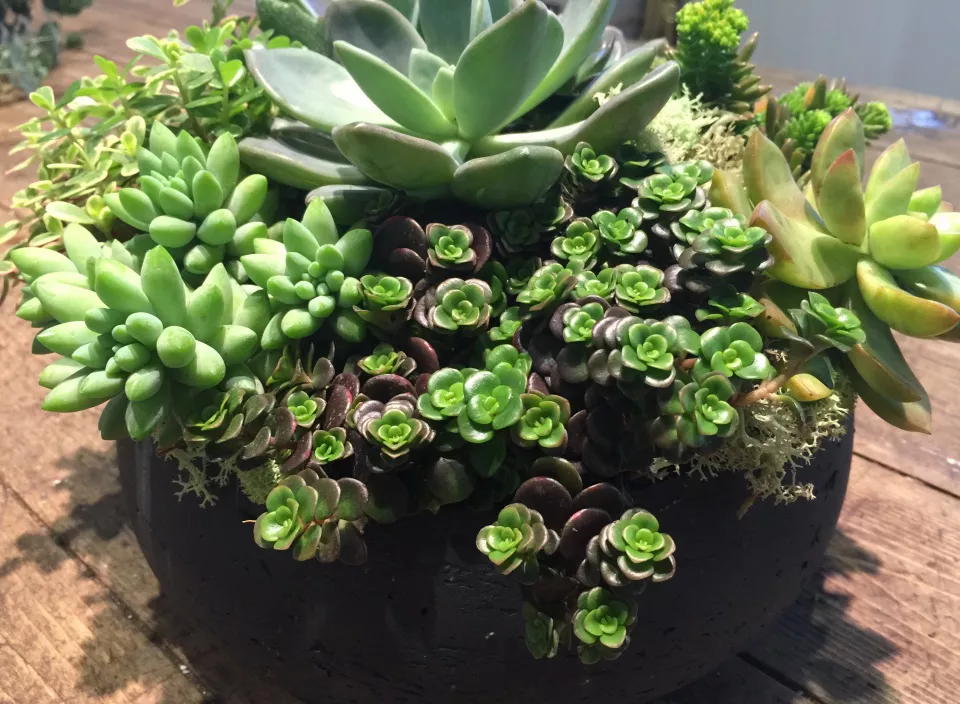Succulents, with their charming varieties and low-maintenance nature, have become popular choices for indoor gardens. These resilient plants are well-suited to a variety of indoor environments, bringing a touch of nature to your living spaces. However, to ensure that your succulents thrive indoors, it’s crucial to provide them with the right care. In this comprehensive guide, we will explore the key aspects of succulent care indoors, offering tips and insights on watering, lighting, soil, and more. Whether you’re a succulent enthusiast or a beginner looking to add these beauties to your indoor oasis, this guide will help you cultivate healthy and vibrant succulents.
Choosing the Right Succulents for Indoors: A Variety of Options
Before delving into care tips, it’s essential to choose succulents that are well-suited for indoor environments. Some succulents are better adapted to lower light conditions and limited space. Common indoor-friendly succulents include Aloe Vera, Haworthia, Gasteria, and certain varieties of Echeveria and Sedum. Consider the available light in your indoor space when selecting succulents, as this will influence their overall health and growth.
Optimal Indoor Lighting Conditions: The Key to Succulent Success
Proper lighting is crucial for the well-being of indoor succulents. While these plants love sunlight, they can adapt to lower light conditions, making them ideal for indoor settings. Place your succulents in a location where they receive bright, indirect sunlight. A south-facing window is typically the best choice, but east or west-facing windows can also provide sufficient light. Rotate your succulents periodically to ensure all sides receive equal light exposure, promoting even growth.
Choosing the Right Pot and Soil: Creating the Perfect Environment
The choice of pot and soil significantly impacts the health of indoor succulents. Select pots with drainage holes to prevent waterlogging, as excess moisture is a common issue for succulents. Well-draining soil is equally important – use a specialized succulent or cactus mix, or create your own by adding perlite or coarse sand to regular potting soil. This ensures that water drains quickly, preventing root rot and other moisture-related problems.
Watering Succulents Indoors: Striking the Right Balance
Watering is a critical aspect of succulent care, and finding the right balance is key to their health. Unlike many other houseplants, succulents prefer to dry out between waterings. Water them thoroughly, allowing water to drain from the bottom of the pot. Stick to a consistent watering schedule, typically every 10-14 days, but adjust based on factors such as temperature, humidity, and the specific needs of your succulents. Be cautious not to overwater, as this can lead to root rot and other issues.
Humidity Considerations: Balancing Moisture Levels
Indoor succulents generally prefer low humidity levels, mimicking the arid conditions of their natural habitats. In environments with high humidity, especially during the winter months when heating systems are in use, it’s essential to take additional measures to balance moisture levels. Ensure proper ventilation, avoid overwatering, and consider using a dehumidifier if necessary. Adequate airflow helps prevent fungal issues and keeps succulents healthy.
Temperature Preferences: Mimicking Natural Conditions
Succulents thrive in temperature ranges commonly found in homes, making them well-suited for indoor environments. Keep your indoor succulents in temperatures between 60°F and 80°F (15°C to 27°C) during the day. Most succulents can tolerate slightly cooler temperatures at night. Protect them from drafts, especially during winter, and avoid placing them near heaters or air conditioning vents, which can create extreme temperature fluctuations.
Fertilizing: Providing Nutrients in Moderation
While succulents are not heavy feeders, providing them with the right nutrients is essential for healthy growth. Use a balanced, diluted succulent fertilizer during the growing season (spring and summer). Fertilize sparingly – once a month is usually sufficient. Avoid over-fertilizing, as succulents can be sensitive to excess nutrients. Always follow the manufacturer’s instructions regarding application rates, and cease fertilization during the dormant winter months.
Pruning and Deadheading: Encouraging Compact Growth
Pruning and deadheading are essential practices for maintaining the compact and aesthetic appearance of your indoor succulents. Remove dead or yellowing leaves with clean, sharp scissors or pruning shears. This not only enhances the plant’s appearance but also encourages new growth. Regular pruning prevents the succulent from becoming leggy and promotes a fuller, more robust structure.
Managing Pests: Vigilance and Prompt Action
While succulents are relatively resistant to pests, occasional issues may arise, especially indoors. Common pests include aphids, mealybugs, and spider mites. Inspect your succulents regularly for signs of pests, such as small insects, webbing, or stippling on leaves. If you detect an infestation, treat it promptly with insecticidal soap, neem oil, or a mixture of water and mild dish soap. Isolating new succulents for a few weeks after bringing them indoors can help prevent the spread of pests.
Creating an Aesthetically Pleasing Arrangement: Designing with Succulents
In addition to proper care, consider the aesthetic aspect of your indoor succulent arrangement. Experiment with different pot shapes, sizes, and colors to create visually appealing displays. Group succulents with similar light and water requirements to simplify care. Incorporate decorative elements such as rocks or pebbles to enhance the overall aesthetic. Remember that succulents come in various shapes and colors, allowing you to create stunning arrangements that complement your interior design.
Conclusion
Taking care of succulents indoors is a delightful journey that rewards you with the beauty and resilience of these captivating plants. By providing optimal light, selecting the right pot and soil, mastering watering techniques, and addressing other key aspects of care, you can create a thriving indoor succulent garden. Embrace the versatility of succulents, experiment with arrangements, and enjoy the satisfaction of nurturing these unique plants in the comfort of your home. With the right care and attention, your indoor succulents will not only survive but thrive, bringing a touch of nature and tranquility to your living spaces.


